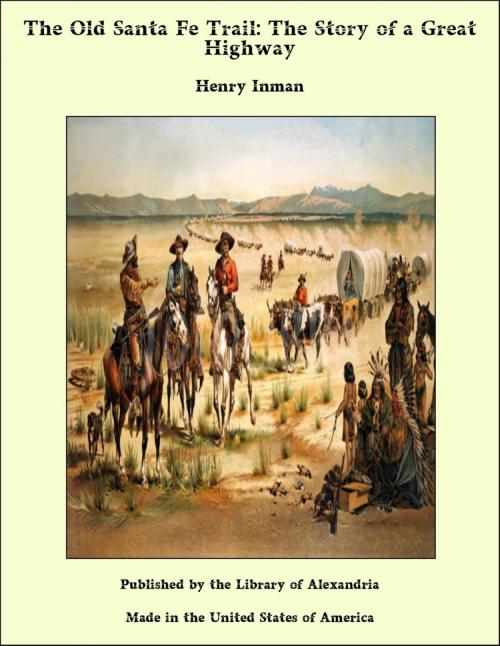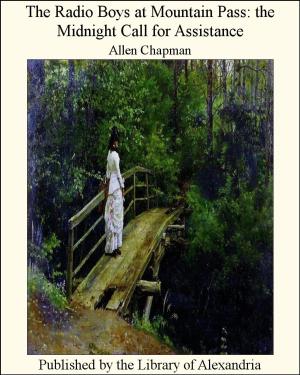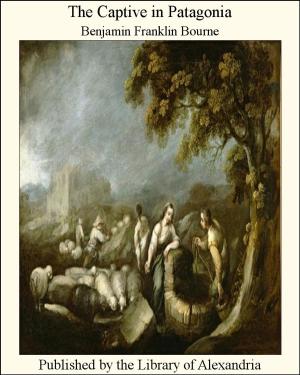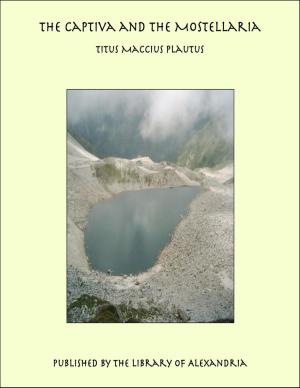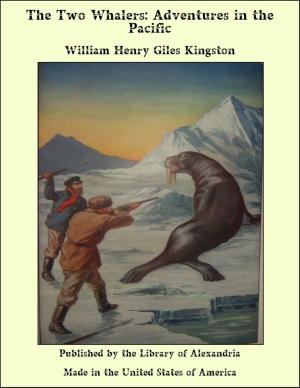The Old Santa Fe Trail: The Story of a Great Highway
Nonfiction, Religion & Spirituality, New Age, History, Fiction & Literature| Author: | Henry Inman | ISBN: | 9781465624987 |
| Publisher: | Library of Alexandria | Publication: | March 8, 2015 |
| Imprint: | Language: | English |
| Author: | Henry Inman |
| ISBN: | 9781465624987 |
| Publisher: | Library of Alexandria |
| Publication: | March 8, 2015 |
| Imprint: | |
| Language: | English |
For more than three centuries, a period extending from 1541 to 1851, historians believed, and so announced to the literary world, that Francisco Vasquez de Coronado, the celebrated Spanish explorer, in his search for the Seven Cities of Cibola and the Kingdom of Quivira, was the first European to travel over the intra-continent region of North America. In the last year above referred to, however, Buckingham Smith, of Florida, an eminent Spanish scholar, and secretary of the American Legation at Madrid, discovered among the archives of State the Narrative of Alvar Nunez Cabeca de Vaca, where for nearly three hundred years it had lain, musty and begrimed with the dust of ages, an unread and forgotten story of suffering that has no parallel in fiction. The distinguished antiquarian unearthed the valuable manuscript from its grave of oblivion, translated it into English, and gave it to the world of letters; conferring honour upon whom honour was due, and tearing the laurels from such grand voyageurs and discoverers as De Soto, La Salle, and Coronado, upon whose heads history had erroneously placed them, through no fault, or arrogance, however, of their own. Cabeca, beyond any question, travelled the Old Santa Fe Trail for many miles, crossed it where it intersects the Arkansas River, a little east of Fort William or Bent's Fort, and went thence on into New Mexico, following the famous highway as far, at least, as Las Vegas. Cabeca's march antedated that of Coronado by five years. To this intrepid Spanish voyageur we are indebted for the first description of the American bison, or buffalo as the animal is erroneously called. It is not within the province of this work to follow De Soto through all his terrible trials on the North American continent; the wonderful story may be found in every well-organized library. It is recorded, however, that some time during the year 1542, his decimated army, then under the command of Luis de Moscoso, De Soto having died the previous May, was camped on the Arkansas River, far upward towards what is now Kansas. It was this command, too, of the unfortunate but cruel De Soto, that saw the Rocky Mountains from the east. The chronicler of the disastrous journey towards the mountains says: "The entire route became a trail of fire and blood," as they had many a desperate struggle with the savages of the plains, who "were of gigantic structure, and fought with heavy strong clubs, with the desperation of demons. Such was their tremendous strength, that one of these warriors was a match for a Spanish soldier, though mounted on a horse, armed with a sword and cased in armour!" Moscoso was searching for Coronado, and he was one of the most humane of all the officers of De Soto's command, for he evidently bent every energy to extricate his men from the dreadful environments of their situation; despairing of reaching the Gulf by the Mississippi, he struck westward, hoping, as Cabeca de Vaca had done, to arrive in Mexico overland. A period of six months was consumed in Moscoso's march towards the Rocky Mountains, but he failed to find Coronado, who at that time was camped near where Wichita, Kansas, is located; according to his historian, "at the junction of the St. Peter and St. Paul" (the Big and Little Arkansas?). That point was the place of separation between Coronado and a number of his followers; many returning to Mexico, while the undaunted commander, with as many as he could induce to accompany him, continued easterly, still in search of the mythical Quivira. How far westward Moscoso travelled cannot be determined accurately, but that his route extended up the valley of the Arkansas for more than three hundred miles, into what is now Kansas, is proved by the statement of his historian, who says: "They saw great chains of mountains and forests to the west, which they understood were uninhabited."
For more than three centuries, a period extending from 1541 to 1851, historians believed, and so announced to the literary world, that Francisco Vasquez de Coronado, the celebrated Spanish explorer, in his search for the Seven Cities of Cibola and the Kingdom of Quivira, was the first European to travel over the intra-continent region of North America. In the last year above referred to, however, Buckingham Smith, of Florida, an eminent Spanish scholar, and secretary of the American Legation at Madrid, discovered among the archives of State the Narrative of Alvar Nunez Cabeca de Vaca, where for nearly three hundred years it had lain, musty and begrimed with the dust of ages, an unread and forgotten story of suffering that has no parallel in fiction. The distinguished antiquarian unearthed the valuable manuscript from its grave of oblivion, translated it into English, and gave it to the world of letters; conferring honour upon whom honour was due, and tearing the laurels from such grand voyageurs and discoverers as De Soto, La Salle, and Coronado, upon whose heads history had erroneously placed them, through no fault, or arrogance, however, of their own. Cabeca, beyond any question, travelled the Old Santa Fe Trail for many miles, crossed it where it intersects the Arkansas River, a little east of Fort William or Bent's Fort, and went thence on into New Mexico, following the famous highway as far, at least, as Las Vegas. Cabeca's march antedated that of Coronado by five years. To this intrepid Spanish voyageur we are indebted for the first description of the American bison, or buffalo as the animal is erroneously called. It is not within the province of this work to follow De Soto through all his terrible trials on the North American continent; the wonderful story may be found in every well-organized library. It is recorded, however, that some time during the year 1542, his decimated army, then under the command of Luis de Moscoso, De Soto having died the previous May, was camped on the Arkansas River, far upward towards what is now Kansas. It was this command, too, of the unfortunate but cruel De Soto, that saw the Rocky Mountains from the east. The chronicler of the disastrous journey towards the mountains says: "The entire route became a trail of fire and blood," as they had many a desperate struggle with the savages of the plains, who "were of gigantic structure, and fought with heavy strong clubs, with the desperation of demons. Such was their tremendous strength, that one of these warriors was a match for a Spanish soldier, though mounted on a horse, armed with a sword and cased in armour!" Moscoso was searching for Coronado, and he was one of the most humane of all the officers of De Soto's command, for he evidently bent every energy to extricate his men from the dreadful environments of their situation; despairing of reaching the Gulf by the Mississippi, he struck westward, hoping, as Cabeca de Vaca had done, to arrive in Mexico overland. A period of six months was consumed in Moscoso's march towards the Rocky Mountains, but he failed to find Coronado, who at that time was camped near where Wichita, Kansas, is located; according to his historian, "at the junction of the St. Peter and St. Paul" (the Big and Little Arkansas?). That point was the place of separation between Coronado and a number of his followers; many returning to Mexico, while the undaunted commander, with as many as he could induce to accompany him, continued easterly, still in search of the mythical Quivira. How far westward Moscoso travelled cannot be determined accurately, but that his route extended up the valley of the Arkansas for more than three hundred miles, into what is now Kansas, is proved by the statement of his historian, who says: "They saw great chains of mountains and forests to the west, which they understood were uninhabited."
